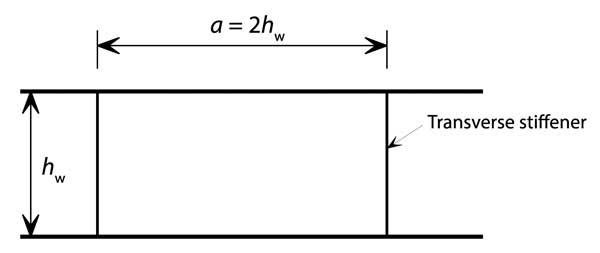Projects and Features
Partitions: Dead or Alive?
 Alastair Hughes explores the relationship between partitions and partial factors.
Alastair Hughes explores the relationship between partitions and partial factors.
Introduction
Partition allowances make a significant contribution to the design load on a modern office floor. Although open plan offices are currently popular, there is always a demand for at least some partitioned office and acoustically isolated meeting spaces, and occupants expect to be free to plan (or replan) these wherever they might want them. The standard response is to add a partition allowance, commonly 1kPa, to the imposed load. In Eurocode terms, the partitions are ‘movable’ (or ‘moveable’ – both spellings are used) and the allowance is a ‘defined’ uniformly distributed load (UDL) per square metre.
When partitions are lumped with the occupancy loading and given ‘variable action’ status, they qualify for live load reduction (LLR). Although the immediate supporting structure must carry the full load, influence on columns several floors down can be reduced by as much as 50%.
If, on the other hand, the partitions are shown on the plans, each wall’s weight can be individually evaluated as a ‘permanent’ action. In this case the load factor is smaller but LLR is not applicable, and nor are combination factors.
Quantifying the weight of partitions
The term ‘partition’ implies a non-structural internal wall that divides one space from another. We generally have in mind demountable metal and glass systems. Non-structural masonry can also be used to subdivide building floors, but is usually reserved for permanent walls that are shown on the plans. Timber and plasterboard also have their place.
EN 1991-1-1 distinguishes between ‘movable’ and ‘heavier’ partitions. ‘Heavier’ means heavier than 3 kN/m (e g 2.5m height at 120 kg/m²). Heavier partitions, at least those on suspended slabs, need to be shown on the plans because their locations and directions ‘should be considered’ in the design of the floor, according to EN 1991-1-1 6.3.1.2 (9).
‘Movable’ partitions of 3kN/m or less do not need to be planned out in advance, as they are allowed for by a ‘defined’ uniformly distributed load which is added to the regular occupancy load q subscript k. As such they are treated as a variable action (live load).
In EN 1991-1-1 partitions are classed (by weight) as ≤1, ≤2 and ≤3 kN/m. The corresponding ‘defined’ UDLs are respectively 0.5, 0.8 and 1.2 kPa. On the face of it this implies quite large cells, averaging just 4 or 5m length of partition per 10 m² of floor area. Presumably however the numbers have been derived from realistic layouts with core and perimeter walls assumed to be separately accounted for.
Despite the Standard’s classification levels, designers may decide to retain the 1kPa allowance that is so familiar in the property marketplace. This is half way between the second and third class, which would imply that the weight of the partitions must not exceed 2.5 kN/m.
Partitions as dead load (permanent action)
When partitions are individually calculated, they are treated as permanent (dead) load, just like the structure itself, the floor finishes and the ceiling/services allowance. Their load factor is 1.35, or 1.25 if Expression 6.10b from EN 1990 is used, and there are no alternative load patterns to consider. In theory at least, the effect of each wall’s line load is separately calculated. If it is a beam we are designing the critical section may not be at midspan, as a result of an asymmetric layout, but at least that layout is immutable – it is shown on the plans – and the calculation only has to be done once. In practice, designers tend to make conservative simplifications, assessing a suitably generous allowance where the layout is at its densest and applying this as if uniformly distributed over the floor in question. This, of course, has much in common with the approach the Standard authorizes for lighter, ‘movable’, partitions.
Partitions as live load (variable action)
There are three main differences if partitions are considered as ‘movable’ (live) as opposed to ‘heavier’ (dead):
• Live load is not always present (hence pattern loading)
• Live load is differently factored
• Live load is subject to reduction (LLR)
Pattern Loading
Pattern loading exerts a significant influence on the design of continuous members, in which multiple design situations involving load on alternate and adjacent spans extend the design bending moment envelope. Its effect is exaggerated by the load factor, as well as the customary assumption that 100% of the load on one side of a support steps down to zero on the other. Incredibly, the first UK code for factored design (CP110 in 1972) went even further, requiring permanent action on the unloaded spans to be factored down by 0.9! Such is the respect we pay to our codes that this requirement survived for 13 years.
Fortunately most steel beams are not designed as continuous.
Different load factors
For a ‘heavier’ partition (one shown on the plans) a partial factor of 1.25 may be used while for a partition considered as ‘movable’ a partial factor of 1.5 is prescribed. The difference in ‘level of protection’ is even larger for those (non-UK) designs that adopt Expression 6.10b in EN 1990 with its recommended ξ value of 0.85 which results in a partial factor of 1.15 for permanent actions.
Live load reduction
LLR is routinely applied in multi-storey column design, and may also be useful for beams supporting large areas of floor. Up to 50% reduction is available, which reflects the improbability that floor load averaged over a large area will be more than half that to which an individual slab might locally be subject. But is this true of partitions, or the allowance that is ‘defined’ to represent them? Yes, but to a lesser degree, perhaps? It is improbable that the full area at every level will be partitioned at the density represented by the ‘defined’ allowance, but not impossible for an individual column to find itself supporting a denser than average layout repeated at several levels.
LLR is not compulsory, and conservatively inclined designers are free to exercise self-denial, but others would argue that the principle is valid and it is wasteful not to take advantage. The Standard makes no distinction between occupancy loading and ‘defined’ partition allowance where LLR is concerned.
Review and conclusions
It is apparent that Standard-prescribed ‘levels of protection’ can and do vary significantly between ‘movable’ and ‘heavier’ partitions. It is not possible to declare that one approach is advantageous versus the other. While ‘movable’ partitions are (probably) more generously assessed, and certainly attract higher partial factors, LLR can turn the tables by reducing design loads for columns and foundations lower down the same building.
Another point to consider is that ‘smeared’ partition allowances can, for slabs, understate the reality they are intended to represent. For example consider the situation where a partition takes a line midway between two parallel beams. The bending moment at midspan is given by the familiar expression WL/4 (W in kN/m). If the same partition is considered as a UDL and ‘smeared’ over the slab the bending moment at mid span is given by wL²/8 (w in kPa). For the heaviest of the European movable partition classes a 3kN/m partition at the middle of a 3m span will result in a bending moment of 3 x 3/4 = 2.25 kNm/m. However, EN1991-1-1 6.3.1.2 defines a UDL of 1.2 kPa for this class of ‘movable’ partition, which will develop a bending moment at midspan of 1.2 x 3²/8 = 1.35 kNm/m. This is only 60% of the actual bending moment and its equivalence seems questionable.
From the perspective of the supporting beam ‘smearing’ the partition loads is more satisfactory. The slab subject to 1.2kPa will transmit 3.6kN/m to the beam, which seems ample and will allow for a partition running directly above.
In practice, designers are not always in a position to choose whether partitions are ‘movable’ or ‘heavier’, but there will be buildings for which the decision could go either way. Strictly speaking, it is impossible to comply with the Standard’s requirement for ‘heavier’ (than 3 kN/m) partitions to be ‘considered in the design taking account of… the locations and directions of the partitions’ unless they are shown on the plans.
It is all too easy to point out inconsistencies that result from well intended provisions of the Standard. It is more difficult to suggest how they could be ironed out in practice. A good part of the problem would go away if both live and dead load in buildings shared the same partial factor, say 1.45. That suggestion has considerable merit, and would simplify much else besides, but it may be optimistic to expect such a radical move any time soon. Meanwhile, conscious of the issues discussed above, the prudent designer might opt to set a partition allowance on the generous side (relative to Standard prescriptions) and to treat it as part of the variable action, subject to LLR in the normal way. Of course generosity in the declared occupancy loading (such as 4 kPa when the Standard only demands 2.5) could provide much the same reassurance. In any structural design situation, what really matters is the overall safety factor. Any local partition ‘overload’ is much diluted by occupancy loading (people, furniture etc), and there could also be some negative correlation between them if cellular offices tend to be more thinly populated than open plan.












